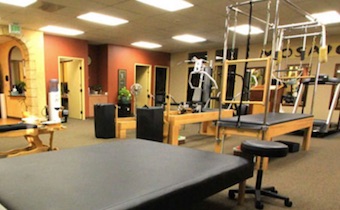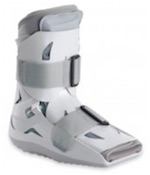Americans spend an estimated $30 billion yearly on physical therapy to attack aches and pains. Doubts remain as to the effectiveness of the treatments.
PTs deliver an average of 3.4 weighted procedures during a visit. Since the average Medicare payment is between $26 and $30 per procedure, a single PT session costs around $100.
PR people are among those footing this bill and may have had experiences with PT themselves.
 |
PT treatment centers have numerous pieces of expensive equipment designed to build muscle strength—a 180-degree flip-flop from decades ago when the dominant regimen for muscle-building was “Dynamic Tension” as promoted by Charles Atlas.
That involved applying one muscle against another to build strength.
This writer spent much of his youth at the local YMCA whose purpose was to develop “a healthy spirit, mind and body.” That remains its purpose.
As a “junior leader” we helped to conduct classes in exercises that included push-ups, deep-knee bends, sit-ups, running around a track at the gym, swimming, etc. No devices were used.
U.K. Study Backs Self-Treatment
The British Medical Journal found in 2016 that self-treatment for ankle sprains, the “most common musculoskeletal injury,” worked just as well as PT.
Queen’s University in Canada studied 503 patients who had torn a lateral, or outer, ankle ligament and monitored their recovery. Over the next six months, they were told to rest, ice, elevate, apply compression, and restrict weight-bearing activities on their own. Half of the patients got up to seven sessions of PT.
At one, three, and six months, the researchers assessed both groups’ recovery. At no time were the participants receiving PT faring any better than the participants who did self-care. Everyone’s ankle functionality, on average, progressed about equally.
"Intuitively, you’d expect that if you were getting additional therapy, you’d see better results," says lead researcher Brenda Brouwer. "But we just didn’t see that in terms of functional benefits."
Had Bad Personal Experience
 |
This writer had a bad personal experience with PT after we sustained a hairline fracture of our left ankle in a fall.
A doctor prescribed a heavy boot designed to immobilize the ankle. The ankle healed in about six months but weakness developed in our right leg.
The doctor prescribed PT. However, strenuous exercises resulted in lower back pain that made sleeping difficult and PT was halted. Rest had been the best cure.
NYT Covered PT
A New York Times article 1/6/2010 on PT by Gina Kolata, was titled: “Treat Me, But No Tricks Please.”
“There is a growing body of evidence that supports what physical therapists do but there is a lot of voodoo out there too,” James Irrgang, Ph.D., told Kolata. He is currently Scientific Director of the American Physical Therapy Assn.’s Physical Therapy Outcomes Registry.
“Voodoo” treatments Irrgang described were ice and heat and ultrasound. “There is no evidence showing laser and release—a massage technique—to be effective in helping injuries heal,” he said.
Ice and heat can control pain but the “underlying injury remains,” he said.
He noted that people often drop out of the PT programs before completion “and it is often because the treatment is not helping or is making them feel worse.”
NYT Generated 183 Comments
The NYT article generated 183 comments, most of them in praise of PT. Negative comments included the following.
"A runner" based in Washington, D.C., told NYT on 1/7/2010:
“I am not a believer in physical therapy. After breaking a hip in an accident, I had several months of physical therapy. There was early benefit in getting me off my back and restoring confidence in my ability to move. However, after the first few weeks, the physical therapy sessions often caused a great deal of pain and rendered me less mobile.
“No amount of therapy is going to speed the healing process. Indeed, after I complained to the surgeon, he speculated that trying to stretch swollen, displaced, and cut muscles wasn't a very good idea. Prior to the injury, I was a biker and runner and in great condition. The doctor and I concluded that resuming as much swimming, walking, and biking as I could tolerate on a daily basis was more likely to speed recovery than 50 minute sessions of stretching and other therapy-like exercises a few times a week.
A comment from “ripper 999” was:
“I have only once had PT help me and that was when I broke my hip and needed their help to get me walking again and believe me that was quite the journey of pain.
“I have gone to PT many times for shoulders injuries/pain and most recently a partial rotator cuff tear and biceps impingement and just like all the other times PT was a serious let down and waste of time and money.
“Don't you find the first day to PT is awesome, they sit and talk and find out all your problems and even start a few exercises and you think..."Wow, finally I might get some relief!" of course that’s short lived till visit two and every visit after when it seems they are way overbooked and come into your stall and say "okay lets ice this for 15 mins and then I want you to do this exercise for 20 mins…”
“You then don't see your PT till your session is up and they say something like "Well does it feel better? How about you do this exercise until our next session?”
A letter came from “an old, beat-up ballet dancer” who said that 15 years of dancing had produced numerous injuries but he never met a doctor or therapist who could help with a “soft-tissue injury.” Time alone cured those, said “Mike in Austin.”
APTA Describes Its Mission
|
|
APTA, founded in 1945, based in Alexandria, Va., had revenues of $64.4 million in its latest reported year and $47.6M in net assets. EIN: 13-1512769.
Sharon Dunn is president and Lisa Saladin is VP.
APTA’s Vision Statement says its mission is “Transforming society by optimizing movement to improve the human experience.”
“Movement is a key to optimal living and quality of life for all people that extends beyond health to every person's ability to participate in and contribute to society,” says the statement.
“The complex needs of society, such as those resulting from a sedentary lifestyle, beckon for the physical therapy profession to engage with consumers to reduce preventable health care costs and overcome barriers to participation in society to ensure the successful existence of society far into the future.
 |
“While this is APTA's vision for the physical therapy profession, it is meant also to inspire others throughout society to, together, create systems that optimize movement and function for all people. The following principles of Identity, Quality, Collaboration, Value, Innovation, Consumer-centricity, Access/Equity, and Advocacy demonstrate how the profession and society will look when this vision is achieved.”

 Sharon Dunn
Sharon Dunn
 Lo Isidro, senior director at Real Chemistry with more than a decade of strategic communications and PA experience, has joined Narrative Strategies.
Lo Isidro, senior director at Real Chemistry with more than a decade of strategic communications and PA experience, has joined Narrative Strategies. Nelson Fernandez, former North American chair of APCO Worldwide and managing director of Burson-Marsteller, has joined Volunteers in Medicine Berkshires as director of communications and PA.
Nelson Fernandez, former North American chair of APCO Worldwide and managing director of Burson-Marsteller, has joined Volunteers in Medicine Berkshires as director of communications and PA. Lilit Bargar, who was most recently an EVP in the healthcare practice at Weber Shandwick, comes on board at GCI Health as EVP, corporate practice lead.
Lilit Bargar, who was most recently an EVP in the healthcare practice at Weber Shandwick, comes on board at GCI Health as EVP, corporate practice lead.
 Five ways that successful thought leaders are made.
Five ways that successful thought leaders are made.


 Have a comment? Send it to
Have a comment? Send it to 
No comments have been submitted for this story yet.